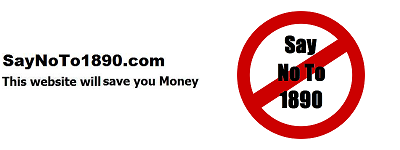 A user of this website very kindly drew my attention to a special “Lo-Call” page on the Revenue website (Low Cost Phone Numbers).
A user of this website very kindly drew my attention to a special “Lo-Call” page on the Revenue website (Low Cost Phone Numbers).
According to the website:
Revenue provides low cost (‘LoCall’) phone numbers for some of our most popular services.
Please note that the rates charged for the use of 1890 (LoCall) numbers may vary among different service providers. It is recommended that you only ring these numbers using a landline as calls made using mobiles may be expensive.)
The page, however, while somewhat useful in explaining the potential cost to people of calling these 1890 numbers from mobiles is of limited benefit in that while it lists the main 1890 numbers (18 of them), it only provides geographic alternatives for 10 of them.
Of course, here on SayNoTo1890.com, there are actually alternatives for 17 out of the 18 numbers.
You will actually see this message on many government websites these days – informing users of the cost implications of calling 1890 numbers from mobiles. This contact page from the Department of Agriculture, Food and the Marine, for example, has the following text:
Note: Rates charged for 1890 (Lo-call) numbers may vary among different service providers
And interestingly, they provide geographic alternatives for 4 out of 4 of the 1890 numbers listed on that main contact page.
Similarly, this contact page from the Department of Jobs, Enterprise and Innovation provides the following text, and gives geographic alternatives for 3 out of 3 of the 1890 numbers listed.
*Note that the rates charged for the use of 1890 (LoCall) numbers may vary among different service providers
Interestingly, the Department of Communications, Energy and Natural Resources – the one government department that could have some influence over how 1850, 1890 and 0818 numbers are treated by mobile telecoms providers – has a contact page that doesn’t provide any 1890 numbers at all. It only provides geographic alternative numbers for all sections linked on that page.
